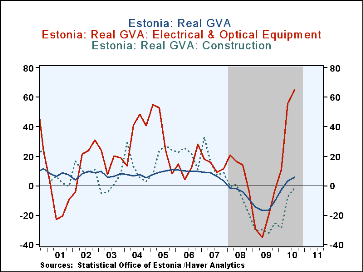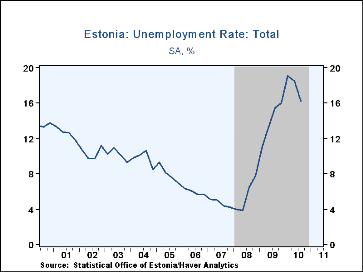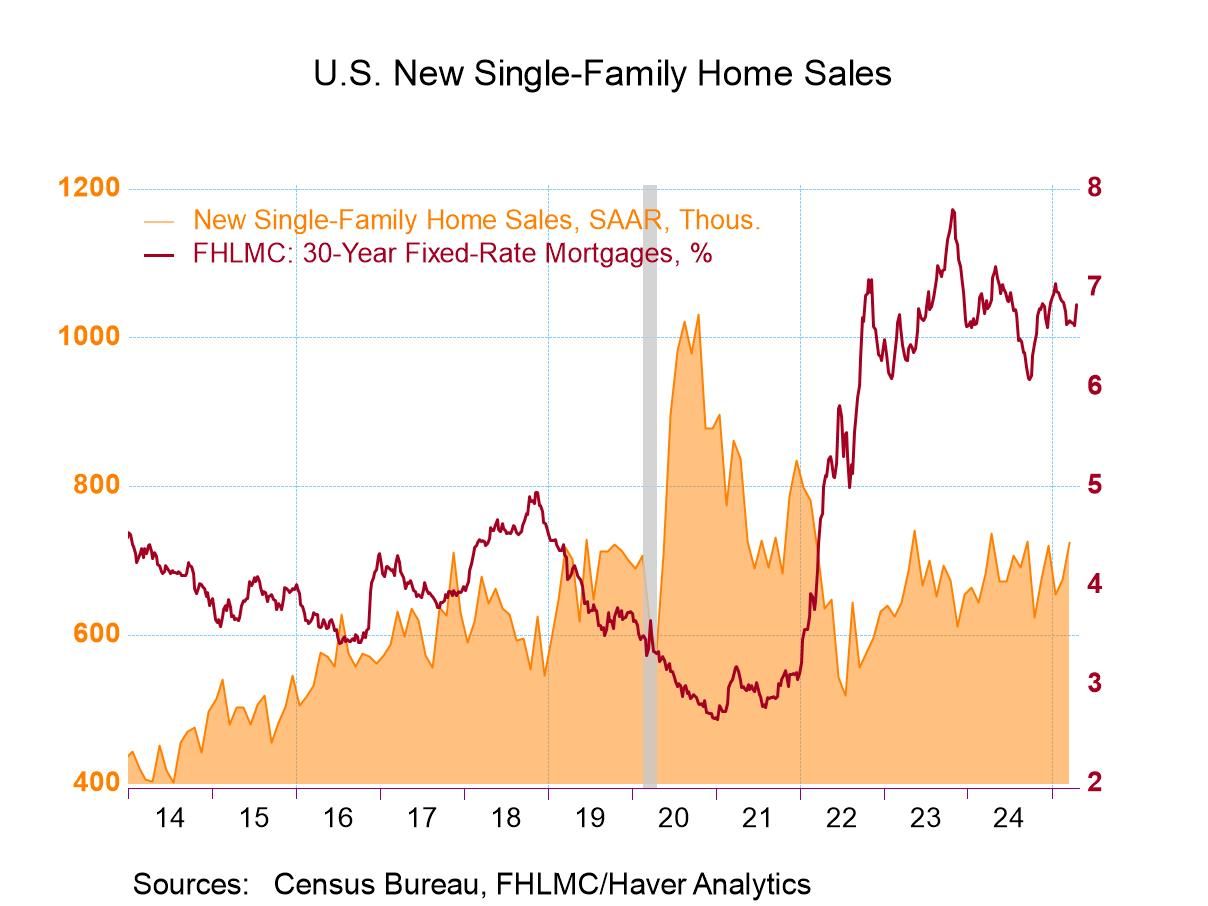 Global| Dec 31 2010
Global| Dec 31 2010Estonia Switches to the Euro
Summary
As 2011 begins, the Baltic nation of Estonia will join the Euro Area, becoming the 17th country to use the euro currency. The last country to adopt the currency was Slovakia at the beginning of 2009. This event marks the retirement of [...]
As 2011 begins, the Baltic nation of Estonia will join the Euro Area, becoming the 17th country to use the euro currency. The last country to adopt the currency was Slovakia at the beginning of 2009. This event marks the retirement of the Estonian kroon; the exchange rate is 15.6466 kroons per euro.
Estonia has approximately 1.34 million residents; this will make it the third-smallest member of the Euro Area, ahead of Malta at 413,000 and Cyprus at 803,000. Estonian GDP came to 57.5 billion kroons in Q3 2010, equal to EUR3.7 billion or US$4.7 billion. This would stand second from the smallest among the euro countries, with only Malta having lower GDP.
Manufacturing generates about 17% of Estonian GVA; of that, electrical and optical equipment is the largest major sector, accounting for about 18%. Estonia thus has a significant technology sector. Other sizable industries are forestry and wood products.
During the recent world-wide recession, Estonia's GDP took a major hit, falling 5.1% in 2008 and another 13.9% in 2009. This produced a major surge in unemployment, from just 4.0% of the labor force in 2008Q1 to a peak of 19.1% in 2010Q1; the rate has since fallen back to 16.2%. Interestingly, while the electrical equipment sector declined during this period, it was not the weakest part of the economy. Construction and wood products have had longer contractions, with that in construction still hanging on through 2010Q3. Forestry and electrical equipment plunged but have rebounded sharply in recent months.
Country-source data on Estonia are in Haver's EMERGECW database and summarized in EMERGE. With Estonia's status already as a member of the European Union, it has also been included in the EUROSTAT database. Haver's coverage of Euro Area aggregates will be modified to include Estonia. These aggregates are compiled in two ways: one set of series cover the group of all Euro Area countries as if they had always been allied, while the other grouping adds each member's contribution only in the year it adopted the currency.
Carol Stone, CBE
AuthorMore in Author Profile »Carol Stone, CBE came to Haver Analytics in 2003 following more than 35 years as a financial market economist at major Wall Street financial institutions, most especially Merrill Lynch and Nomura Securities. She has broad experience in analysis and forecasting of flow-of-funds accounts, the federal budget and Federal Reserve operations. At Nomura Securites, among other duties, she developed various indicator forecasting tools and edited a daily global publication produced in London and New York for readers in Tokyo. At Haver Analytics, Carol is a member of the Research Department, aiding database managers with research and documentation efforts, as well as posting commentary on select economic reports. In addition, she conducts Ways-of-the-World, a blog on economic issues for an Episcopal-Church-affiliated website, The Geranium Farm. During her career, Carol served as an officer of the Money Marketeers and the Downtown Economists Club. She has a PhD from NYU's Stern School of Business. She lives in Brooklyn, New York, and has a weekend home on Long Island.








